Simon of Cyrene, the Scandal of the Cross, and Some Life Sight News
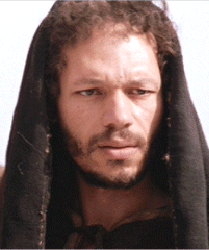 Inhabiting but a single sentence in the Gospel, Simon of Cyrene is one of the stars of Holy Week, and the first of many to help bear the cross of Christ.Writing on pop culture in the March 22 issue of USA Today, ("Star Scandals once grabbed our attention. Not anymore.") Maria Puente described how our "hyper-media age" propels the scandals of Hollywood and anesthetizes us to them. The mug shots of fallen pop stars, and TV footage of their chemically induced escapades, just don't shock us anymore.In the USA Today article, a photo of Mel Gibson in one of his less-than-stellar moments led the pack. Mel Gibson's alcohol-induced rants caught on tape made a lot of people shake their heads in shame. This was doubtless not the Mel Gibson he wants everyone to remember him by, but I was more interested in why the media hyped his rants so mercilessly. It certainly wasn't because of his stardom in "Mad Max" or "Lethal Weapon" or "Braveheart." No, I have no doubt that Mel Gibson's embarrassment was spread throughout the known Universe for only one reason: He produced and directed "The Passion of the Christ," and in the shallow pools of character that reflect Hollywood, to discredit him is to discredit that.But, for me, Mel Gibson's unflattering mug shot flashing across TV screens everywhere came as no great surprise, and really no great scandal. Only a sinner could have brought us "The Passion of the Christ," monumental in its achievement first and foremost because a flawed human being created it. Who else could have so beautifully portrayed the weight of sin upon the back of Christ? It's a work of art that I can never forget. Both horrified and deeply moved, I viewed much of Mel Gibson's powerful portrayal of the Way of the Cross with just one eye open. I could not look, and I could not look away.I will forever associate Mel Gibson with his masterpiece, and not his mug shot, just as I associate the Renaissance popes with the Sistine Chapel, and not with the infamous corruption I described in "Michelangelo and the Hand of God." Who could look with awe upon Michelangelo's Pieta if the sins of its creator overshadowed his art? The media loves promoting the foibles of Christians, and we Catholics living East of Eden are easy game, but we should not be so quick to buy it.
Inhabiting but a single sentence in the Gospel, Simon of Cyrene is one of the stars of Holy Week, and the first of many to help bear the cross of Christ.Writing on pop culture in the March 22 issue of USA Today, ("Star Scandals once grabbed our attention. Not anymore.") Maria Puente described how our "hyper-media age" propels the scandals of Hollywood and anesthetizes us to them. The mug shots of fallen pop stars, and TV footage of their chemically induced escapades, just don't shock us anymore.In the USA Today article, a photo of Mel Gibson in one of his less-than-stellar moments led the pack. Mel Gibson's alcohol-induced rants caught on tape made a lot of people shake their heads in shame. This was doubtless not the Mel Gibson he wants everyone to remember him by, but I was more interested in why the media hyped his rants so mercilessly. It certainly wasn't because of his stardom in "Mad Max" or "Lethal Weapon" or "Braveheart." No, I have no doubt that Mel Gibson's embarrassment was spread throughout the known Universe for only one reason: He produced and directed "The Passion of the Christ," and in the shallow pools of character that reflect Hollywood, to discredit him is to discredit that.But, for me, Mel Gibson's unflattering mug shot flashing across TV screens everywhere came as no great surprise, and really no great scandal. Only a sinner could have brought us "The Passion of the Christ," monumental in its achievement first and foremost because a flawed human being created it. Who else could have so beautifully portrayed the weight of sin upon the back of Christ? It's a work of art that I can never forget. Both horrified and deeply moved, I viewed much of Mel Gibson's powerful portrayal of the Way of the Cross with just one eye open. I could not look, and I could not look away.I will forever associate Mel Gibson with his masterpiece, and not his mug shot, just as I associate the Renaissance popes with the Sistine Chapel, and not with the infamous corruption I described in "Michelangelo and the Hand of God." Who could look with awe upon Michelangelo's Pieta if the sins of its creator overshadowed his art? The media loves promoting the foibles of Christians, and we Catholics living East of Eden are easy game, but we should not be so quick to buy it.
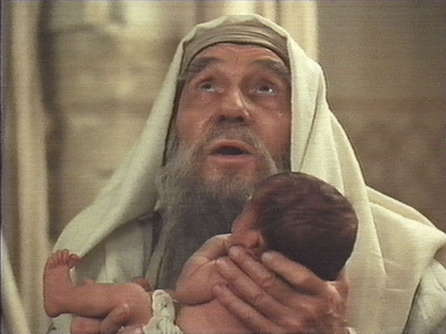
Last year in Holy Week, I wrote "Simon of Cyrene at Calvary: Compelled to Carry the Cross." I mentioned there how deeply moved I was by Mel Gibson's portrayal of Mary at Calvary, and of how he captured so beautifully the fulfillment of Simeon's words to Mary that I described in "February Tales":
"Behold, this child is set for the fall and rising of many in Israel, and for a sign that is spoken against (and a sword will pierce through your own soul also), that thoughts out of many hearts may be revealed." (Luke 2: 34-35). Link to movie clip.
In "The Passion of the Christ" we witnessed that sword pierce her heart with overwhelming power and beauty. "Beauty" might seem a strange word to describe the events at Calvary. How can the image of Christ nailed to His Cross be beautiful? Its beauty is not in its original reality - the Scandal of the Cross - but in what it means in the hearts and souls of believers. What is our existence if we lose sight of the Cross of Christ? I have a feeling Mel Gibson knows the answer to that question.But for me, the second most moving and interesting part of "The Passion of the Christ" was its depiction of one of my favorite characters in all of Sacred Scripture, the man with whom I identify the most: Simon of Cyrene. I want to revisit Simon in this Holy Week, and better describe what his brief presence in the Gospel means for us.COMPELLED TO CARRY HIS CROSS
"And they compelled a passer-by, Simon of Cyrene who was coming in from the country, the father of Alexander and Rufus, to carry his cross." (Mark 15:2)."And as they led him away, they seized one Simon of Cyrene, who was coming in from the country, and laid on him the cross to carry behind Jesus." (Luke 23:26)."As they went out, they came upon a man of Cyrene, Simon by name; this man they compelled to carry his cross." (Matthew 27:32).That's it! This star of the Fifth Station of the Cross has no other reference in all of Scripture beyond a single sentence in each of the Synoptic Gospels. Who was he?
Saint Mark is the first of the Evangelists whose Gospel came into written form. Simon of Cyrene is identified there as "the father of Alexander and Rufus" as though the writer expects readers to know of them. Saint Mark directed his Gospel to the early Jewish-Christian community, so Alexander and Rufus were likely known to him and to those who first read, or heard, his Gospel. There would be no other reason to include their names than an expectation that they would be quite familiar to Saint Mark's readers.At the end of his Epistle to the Romans (Romans 16:13) Saint Paul wrote: "Greet Rufus, eminent in the Lord, and also his mother who is a mother to me as well." Some Scripture scholars associate the Gospel of Mark with Rome, and therefore link it to Saint Paul's Letter to the Romans in which Rufus is known as a devout Christian and leader. If this Rufus was the son of Simon of Cyrene, then it's likely that being compelled to carry the Cross of Christ had a profound impact, not only on Simon himself, but on his entire family who then became known to Saint Paul.Saint Luke's Gospel emphasized the coercion of Simon, citing that he was seized, the Cross of Christ laid upon him, and forced to carry it behind Jesus. It's unclear here what the motivation of the Roman soldiers was. They may have feared that Jesus, thoroughly beaten by the Romans, may not survive carrying the Cross long enough to be crucified. They could also have forced Simon to bear the Cross behind Christ as a further mockery of Him as "King of the Jews."
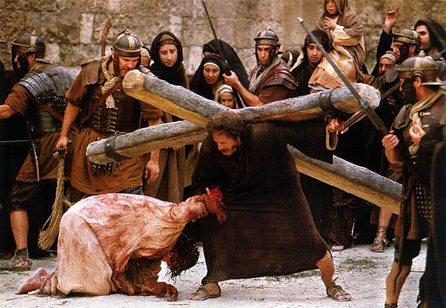
Saint Matthew's Gospel emphasizes simply that Simon of Cyrene was compelled by the Romans to carry the Cross. Simon of Cyrene is conspicuously absent from the Gospel of John, the last of the Gospels to come into written form and the one most imbued with highly developed theological reflection. Simon's absence there also tells us something. Saint John's Gospel presents a well defined Christology, seeing Christ as the fulfillment of the Old Covenant - what we call the Old Testament. Saint John's Gospel proclaims a theological truth in its depiction of the Cross of Christ. Christ carries the wood for his own sacrifice as God's son. The event mirrors the near sacrifice of Isaac, Abraham's son:
"And Abraham took the wood for the burnt offering and laid it upon Isaac his son; and he took in his hand the fire and the knife. So they went, both of them together. And Isaac said to his father . . . 'Where is the lamb for a burnt offering?' Abraham said, 'God Himself will provide the lamb for sacrifice.'" (Gen. 22:6-12)
And indeed, God did. In the theology of Saint John's Gospel, Isaac was the heir of the Old Covenant. When Abraham, in obedience, was about to sacrifice his son, God stayed his hand. At Calvary, God did for us what he spared Abraham from doing for Him. He sacrificed His son, and no one would stay God's hand."THAT MAN, SIMON, IS ME."In the Synoptic Gospels (Mark, Luke, and Matthew) it is clear that Simon of Cyrene was a Jew. He would have no other reason to have been "coming in from the country" to Jerusalem at the time of the Passover. Simon is clearly a historical figure in the Gospels, and not a theological development.However, the inclusion of Simon's city of origin, Cyrene, is both historical and theologically symbolic. Cyrene, an ancient Greek city in Northern Africa in what is now the coast of Libya, had a large Jewish Diaspora, a term that refers to the dispersement - or exile - of Jews beyond Jerusalem six to eight centuries before Christ. Cyrene represents in the Gospel the limits of the known world for both Jews and the Roman Empire."The Passion of the Christ" depicted Simon of Cyrene just as I have always imagined him: resentful, even bitter at first, about the Cross he was compelled to bear. He was simply a man on his way to something else when fate, on that day, pulled him out of the crowd and into the Fifth Station of the Way of the Cross. In his inspired and inspiring new book, Jesus of Nazareth: Holy Week (Libreria Editrice Vaticana, 2011), Pope Benedict XVI underscored the historical necessity of Simon of Cyrene's role:
"The fact that Simon of Cyrene had to carry the cross-beam for Jesus, and that Jesus dies so quickly, may well be attributable to the torture of scourging, during which other criminals sometimes would already have died." (p.198).
Critics of "The Passion of the Christ" deride it for its graphic and violent depiction of the scourging and crucifixion of Christ. It is an event of history, however, and it was not a gentle, civil affair. By the end of Simon's brief journey with Christ, he was changed. In the film, he was now compelled from within himself to remain there with Christ, to finish it.
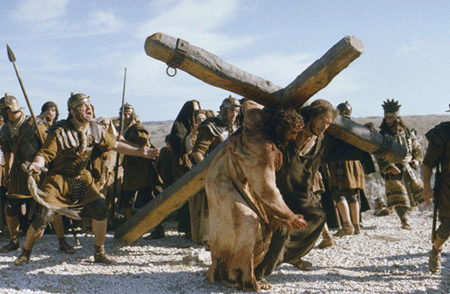
That man, Simon, is me. One new reader of These Stone Walls recently asked in a message how and why I can hold onto faith in the face of so much discouragement. "Only a Christ-like man could carry such a cross as wrongful imprisonment for all these years and still inspire others to believe," she wrote. I appreciated the sentiment, but "Christ-like" is not a term I would ever use to describe myself. I have tried to be an “alter Christus,” as priesthood requires, but on our shared road to Calvary, I relate far more to Simon of Cyrene.I pick up my own crosses reluctantly, with resentment at first, and I have to walk behind Christ for a long, long time before anything in me compels me to carry willingly what fate has saddled me with. I want to be like Christ, and I admire Mel Gibson - even the sinful Mel Gibson in the mug shot for showing us His face. But I long ago had to settle for emulating Simon of Cyrene, compelled to bear the Cross in Christ's shadow.LIFE SIGHT NEWSIn the finest spirit of Saint Simon of Cyrene, a dear friend of mine has done much to help me carry my own cross, and has helped many others. While so many Catholics have been reeling from scandal and struggling with faith, Dr. James P. Guzek, M.D. has been spending his spare time restoring sight and light in some of the poorest corners of the Earth.
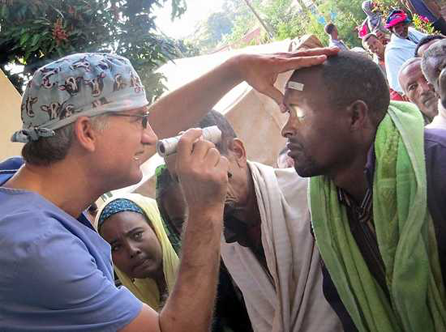
Dr. Jim Guzek is a gifted ophthalmologic surgeon at the Pacific Cataract and Laser Institute in Kennewick, Washington. A husband and the father of five children, Dr. Guzek has been a devoted pro-life advocate, and I am proud to say he's a reader of These Stone Walls and an occasional commenter. Dr. Guzek is no stranger to global poverty and the challenges of both medicine and faith throughout the world. He spent years performing eye surgery in Saudi Arabia, Sri Lanka, and Ghana.This past year, Dr. Guzek, accompanied and assisted by his 14-year-old son, James, traveled to Dembi Dolo, Ethiopia at the behest of the Daughters of Charity who operate an eye clinic there. The region, for reasons unknown, had been plagued with blindness in epidemic proportions, and the clinic had no one able to perform delicate cataract surgery.Dr. Guzek brought with him as many supplies as possible, including an expensive and necessary ophthalmological microscope which ended up detained by Ethiopian customs officials. After much haggling and red tape, somehow most of the equipment and supplies arrived at Dembi Dolo. There were so many patients that the clinic had to limit the surgery only to those who were totally blind. In a grueling week, Dr. Guzek, assisted by his son and a trained Sister Of Charity, performed delicate eye surgery in field conditions on over 63 people, and saved the sight of all but one. It was a heartbreaking work of Biblical proportions.Dr. Guzek told me the story of one nine-year-old girl who had become completely blind by cataracts in both eyes for several years. She and her father waited in line for hours at the clinic. When it was her turn to be seen, Dr. Guzek witnessed the extent of the damage to her eyes. He told her that she would have to be completely still, and not move her eyes at all while he inserted a needle into them to inject anesthesia. He told her this would be very painful. He asked the blind girl if she thought she could do this, but she was too frightened. She left still blind, and in tears.The next morning, she was there in line again. She bravely said she was ready for the surgery and would not move her eyes no matter how much pain the needles caused. She sat perfectly still for the extremely delicate surgery. A day later when the patches were removed from her eyes, she still appeared to be in distress. Dr. Guzek asked if she could see, and the girl said "YES!" When he asked if everything felt okay, she said, through the Sister-interpreter, "Is it okay to move my eyes now?" They had forgotten to tell her! That nine-year-old girl who came into the clinic blind left with 20-30 vision, a radiant smile, and a new life.After 63 surgical procedures, Dr. Guzek's supplies ran out and fifteen blind people had to wait. He and his son returned to Ethiopia in October. Again, ten cases of needed supplies were detained for several days, but in the end, sight was restored to another 73 patients. One was a 20-year-old woman whose eyelid had been destroyed in an accident causing serious damage to her cornea. Dr. Guzek was able to rebuild her eyelid through a skin graft, then repair the badly damaged cornea. Several days after the surgery, she returned without her sunglasses and with a smile. Her father also returned with a sheep for Dr. Guzek, a sign of highest tribute. Seemingly miraculous in the conditions of the clinic and area, not a single one of Dr. Guzek's surgical patients developed infection.Next month, Dr. Jim Guzek and his son, James, are returning to Ethiopia for another round of surgical procedures. I want to ask the Readers of These Stone Walls to pray for them, and for the success of their mission. This year's "Simon of Cyrene special blessing" goes to Dr. James Guzek, M.D., who bears the crosses of others in the light of Christ.
"I have given you as a covenant to the people, a light to the nations, to open the eyes that are blind, to bring out prisoners from the dungeon, from the prison, those who sit in darkness." (Isaiah 42:6-7).
